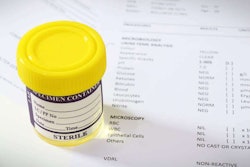

Dr. Amir Erez, a professor of management and graduate student Trevor Foulk at the Warrington College of Business Administration, University of Florida, conducted the study using data on 682 drivers and 6,487 driver months provided by a flatbed trucking customer of Stay Metrics with more than 260 power units.
“To our knowledge, no one has yet looked at the trucking industry to see if generous time-off policies and procedures are able to realize higher employee productivity and job performance,” said Dr. Erez, who serves as a member of Stay Metrics Scientific Advisory Board.
Stay Metrics offers driver engagement and retention services for motor carriers. It administers a custom-branded online driver rewards and recognition platform for its clients that also serves as a data collection tool for driver satisfaction surveys. The company also conducts new driver interviews at the 7 and 45-day periods and exit interviews as a neutral third party.
“We know at Stay Metrics that home time, or the lack thereof, is a predictor of driver turnover,” said Tim Hindes, chief executive officer of Stay Metrics. “What this new study shows is that now an argument can be made by fleet operators that home time has productivity and financial benefits as well.”
The study modeled time off requests that were met by the carrier each month to find the effects on three variables for desirable driver performance in the subsequent months. The results from this unique analysis are summarized below:
- Bonus rate. The mean bonus rate for drivers in the study is 3.5 cents per mile. Drivers earned a monthly bonus that was calculated from their scores in four categories — compliance, vehicle care, fuel, and production. The model suggests that for each time off request met, their bonus rate increased nearly three percent the following month.
- Miles driven. On average, drivers had approximately 8,577 miles per month. For each time off request that was met, the model showed they traveled 218 more miles the following month than drivers who did not take time off. Using a hypothetical rate of $2.00 per mile for revenue, each time off request met generated $536 more in revenue the following month.
- Total bonus pay. This is the product of bonus rate and miles driven. The mean is $344.66 per month and the analysis indicates drivers who took time off earned $17.85 more in bonus pay, per month, than drivers who did not take time off. This is an increase in bonus pay of more than five percent.










